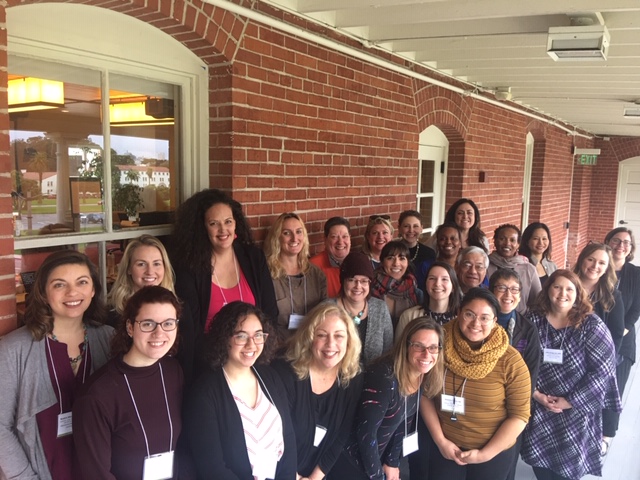Emergency Preparedness

As the frequency of wildfires, hurricanes, floods, heatwaves, droughts, and various other natural disasters continues to rise across the United States and its territories, health centers can expect their operations, workforce, and patients to be increasingly impacted. Amidst these challenges, it is crucial for healthcare providers to recognize the heightened risk of intimate partner violence […]
CUES Intervention

CUES is an evidence-based universal education strategy to educate all patients about healthy and unhealthy relationships, the health impact of IPV, and available national resources for support. CUES stands for Confidentiality, Universal Education, Empowerment, and Support. This approach differs from screening in that all patients are given information on the health impact of IPV and […]
Reproductive and Maternal Health

The intersection of intimate partner violence (IPV), racism, and maternal mortality among birthing people remains one of the least explored and under-resourced topics. Yet addressing these topics is central to ensuring expectant and parenting people do not continue to die from preventable causes. According to the national partnership for women & families, each year, an […]
Tools for Health Centers

General Resources Addressing IPV and Exploitation in Health Centers (CUES Infographic) Futures Without Violence CUES videos Healing Centered Approaches to Screen and Intervene for Social Determinants of Health Including Intimate Partner Violence (A Paper) Increasing Health Care Enrollment for Survivors of Domestic Violence Quality Assessment / Quality Improvement Tool Partnerships Between Health Centers and Domestic […]
Medical-Legal Partnerships

Partnerships between community health centers, civil legal services, and community-based domestic violence programs are essential to address the health, legal, and safety needs of survivors of intimate partner violence (IPV), human trafficking (HT) and exploitation. Formalizing medical legal partnerships (MLPs) is a crucial step to help connect people at risk of or affected by IPV, […]
Oral Health

According to an article published in the The Journal of the American Dental Association, more than half of dentists could not identify a referral for patients experiencing IPV. In several studies survivors of IPV saw a dentist when signs of abuse were present and many were not asked about their injuries (as many as 88.6% […]
HIV/AIDS

According to Centers for Disease Control and Prevention (CDC)’s, Intersection of Intimate Partner Violence and HIV in Women and other research, people living with HIV experience IPV at higher rates compared to the general population. HIV care practitioners and health center staff are working to address the ways that IPV leads to poor health outcomes […]
Adolescent Health

Nearly 1 in 11 female and approximately 1 in 14 male high school students report having experienced physical dating violence in the last year. In order to prevent violence from occurring in the first place, Health Partners invests in prevention strategies that promote healthy relationships among teens and young adults. Adolescents, especially LGBTQIA+ youth, may […]
Health Information Technology

Utilizing health information technology safely and effectively is an important piece of supporting the health center efforts to address and prevent IPV, HT, and exploitation. It is also critical to maintain confidentiality and ensure privacy of data to promote the safety of survivors, while also informing patients how health information will be handled, and respecting […]
LGBTQIA+ Health

Because queer and trans people experience violence at similar, and in some instances higher, rates as heterosexual people, it is critical that health care and other providers ensure that their practice is culturally inclusive for queer and trans people and that they are talking to all of their patients about the effects that intimate partner […]
Farmworker Health

In addition to experiencing IPV, migrant and seasonal agricultural workers may encounter additional disparities and barriers to care that make prevention and supports more complex. Community health centers, in collaboration with community based domestic violence prevention programs can play an important role in addressing these barriers, promoting prevention, and providing a bridge to ongoing support […]
State-wide Work for Building Health Center and DV Program Partnerships

Project Catalyst: State-Wide Transformation on Health, IPV, and Human Trafficking was a four year initiative funded through a collaboration of U.S. Department of Health and Human Services (DHHS) partners, including the Administration for Children and Families’ (ACF) Family and Youth Services Bureau, the HRSA Bureau of Primary Health Care, and the HRSA Office of Women’s […]
People Experiencing Homelessness

Domestic violence is one of the leading causes of homelessness for women and children. According to a 2010 report from the National Center for Children in Poverty, “among mothers with children experiencing homelessness, more than 80 percent had previously experienced domestic violence.” Additionally, LGBTQ youth disproportionately experience homelessness or housing insecurity and often become involved […]
Elder Abuse

One in ten older adults report being abused, neglected or exploited by someone they know, such as a spouse, partner, family member, or caregiver. Yet, many victims aren’t connected with social services or other avenues of support that can help them. IPV in later life is often undetected by healthcare providers, in part due to […]

